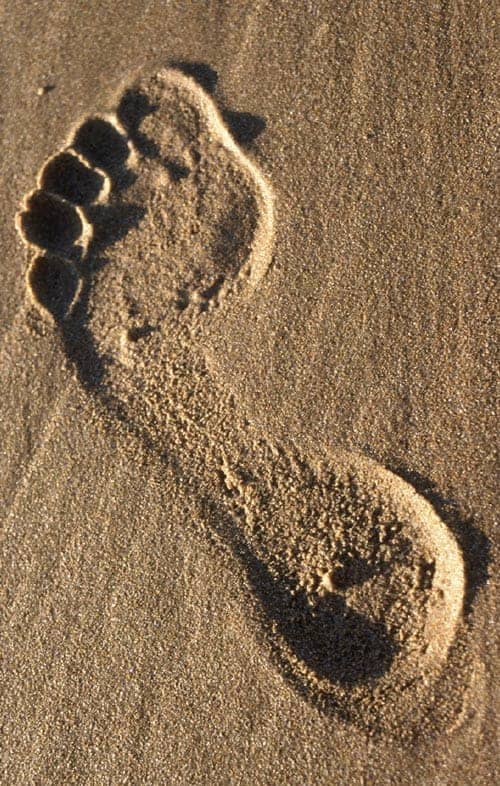Robert P Crease discusses the origin of some units of measurement, and asks for your favourites

Back in the Old Country, a practice among Jews who had lost a loved one was to light a candle on the “jahrzeit” or anniversary of their death. The candle was supposed to burn for 24 hours, and was placed in a holder called a “jahrzeit glass”. Such items were never thrown away – inexpensive glass is a modern technology – and families kept theirs, often reusing them as drinking cups. The practice continued in the New World. In the title story of Philip Roth’s first book, Goodbye Columbus, the protagonist recalls his grandmother drinking “hot tea from an old jahrzeit glass”, an effective detail in conjuring up a transplanted ancestor.
Most Jewish households had them, and they were all approximately the same size – for they were made to hold the same size candle – so jahrzeit glasses were a natural cooking measure. Your friend would tell you that a recipe called for a certain number of “glasses” of flour or matzoh meal. Such recipes were at first passed on orally, and then written down by a later generation – what a daughter remembered from her mother. They were approximate – Old Country recipes tended to be loose with quantities – but they worked.
The transformation of jahrzeit glasses from memorial to measurement, though odd in some ways, is typical of how objects can become units of measure. This generally occurs when the objects in question are: (1) ready to hand in a community’s environment as an element of daily life; (2) of a standard size that is appropriate for a use; and (3) known to be reliable or trustworthy.
Crusoe’s foot
We even see this in more quirky cases, such as two that were recently discussed in the pages of Physics World: the “football pitch” to describe an area (May p23, print edition only) and the “Sydney Harbour” to describe a volume (July p21, print edition only). (I have no idea how big or small either unit is, not being a member of either relevant community.) Another regional example is the Peruvian cocada, which is a linear measure of how far one can walk with a certain load under the influence of a cocoa-leaf-based stimulant in a little over half an hour (about 3 km on flat ground, a kilometre less uphill).
In the days before SI, even common units could have similar origins. Sometimes the units were anthropomorphic, based on parts of the human body or related to its abilities, and thus standard and reliable because of the relative uniformity of human bodies. Examples are the linear measures finger, foot, pace, hand and mile (from the Latin milia passuum). Other units were motivated by the relative uniformity of non-human organisms, such as the mass measures of grain or carob beans (whence carat).
In Daniel Defoe’s novel Robinson Crusoe (1719), the shipwrecked protagonist must recreate a variety of simple technologies on his own, from baking bread to cutting trees into boards. Crusoe carefully and lovingly describes his tools, stressing how much more valuable they are to him than gold. But while he uses traditional English measures (feet, inches and yards; pecks and bushels; pounds), he never says how he did the measuring. Either he is not telling us about his scales, or he is estimating based on a memory shaped by such equipment. This part of the novel never rang true to me. Why in 28 years did Crusoe never invent his own measures? The sole exception is when he uses his foot to make the terrifying discovery that the strange track on the beach is, as it were, “bigger than a Crusoe foot”. To me, at least, the tale would have rung truer with more ready-to-hand measures of this kind.
The invisible network
When societies began to manufacture unit standards – such as an official yardstick or kilogram – so that the standard was a one-of-a-kind artefact, the standards were made accessible to daily life via a network of copies, scales and instruments. The artefact was at the centre of the network, so to speak, and the standards used in daily life – grocery and postal scales, store-bought measuring sticks – were at the fringes. This network also required inspectors, supervisors and records to operate in an efficient and trustworthy manner. By the 19th century, improving these networks came to be seen, not just as a utilitarian goal for facilitating specific technologies, but as an end in itself.
This network has a strange ontology. The “being” of a measurement standard – the authority of the metal cylinder that today sits in the vault in Sevrès as the kilogram – depends on this network. The network is practically invisible to users and to anyone but the network’s managers. It can briefly become visible – along with our vulnerability and dependence – when there is a disaster, as when, in 1999, a $125m Mars spacecraft crashed when NASA engineers used two different systems, metric and imperial, to programme the rockets.
The critical point
So have units changed since the development of SI? In one sense, almost completely. The SI serves not a local community but a universal one. Its definitions of the metre, and its proposed definitions of the kilogram, involve no artefacts, only sets of recipes that may incorporate things like wavelengths or collections of atoms. The question of reliability and trustworthiness has been transferred from objects to the technologies and traceability of the networks.
In another sense, though, the story is the same. The standard unit is not outside the human environment, but still within it – the product of a network of agreements, conventions and habits. The standard is not an intrinsic or natural foothold that is a gift from nature, but the outcome of recipes involving technologies of human invention. I have mentioned a few non-SI units that arose out of human life. There are many others, of course, “barn” being a favourite in physics lore. But what are your pet units and why do you like them? Let me know and I will report on your responses in a future column.
- Hectolitre, decigram, oersted, knot, erg, lux, furlong, league or perhaps the kilderkin? Send your favourite units to Robert P Crease at the address or e-mail below.


